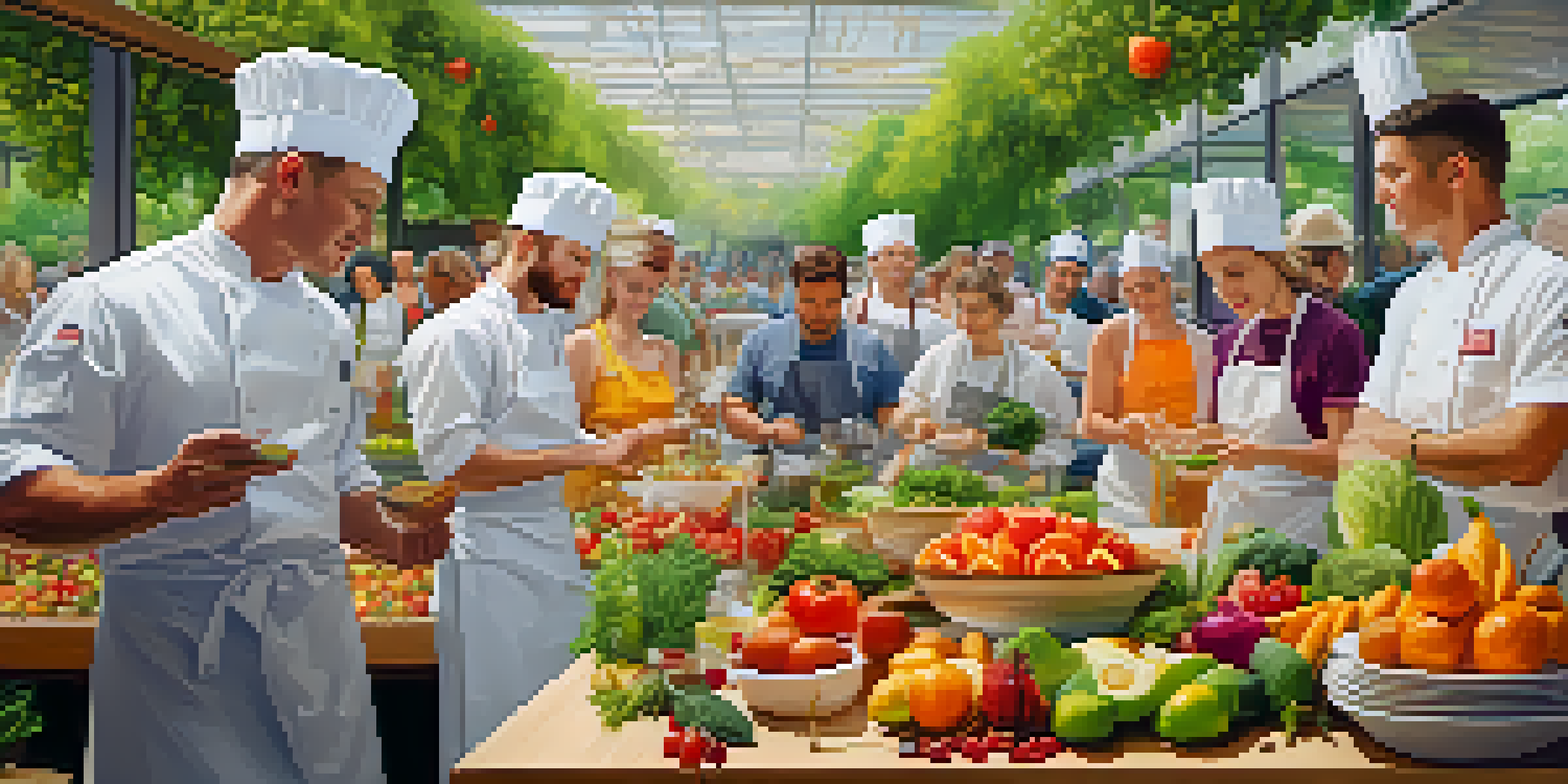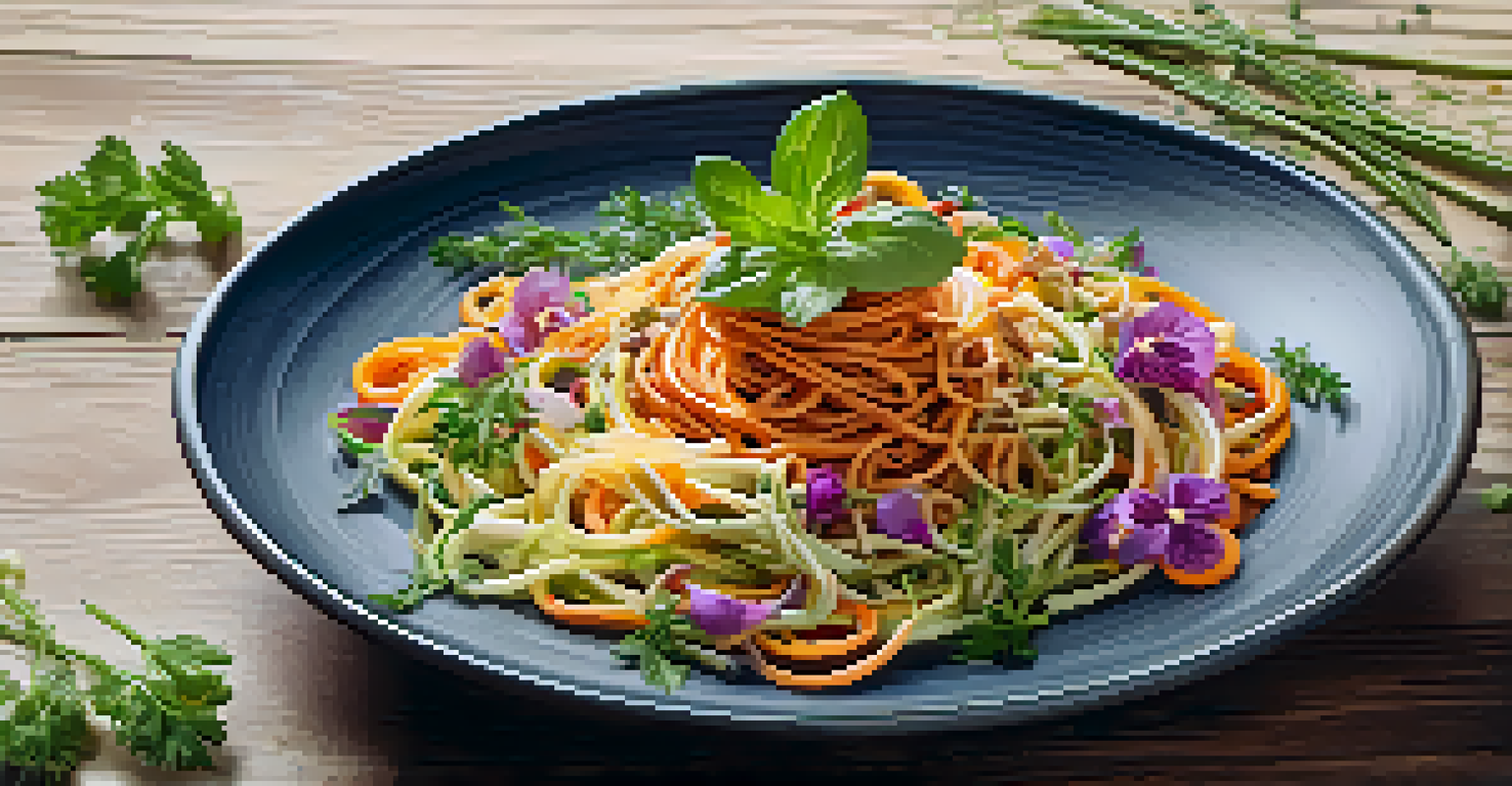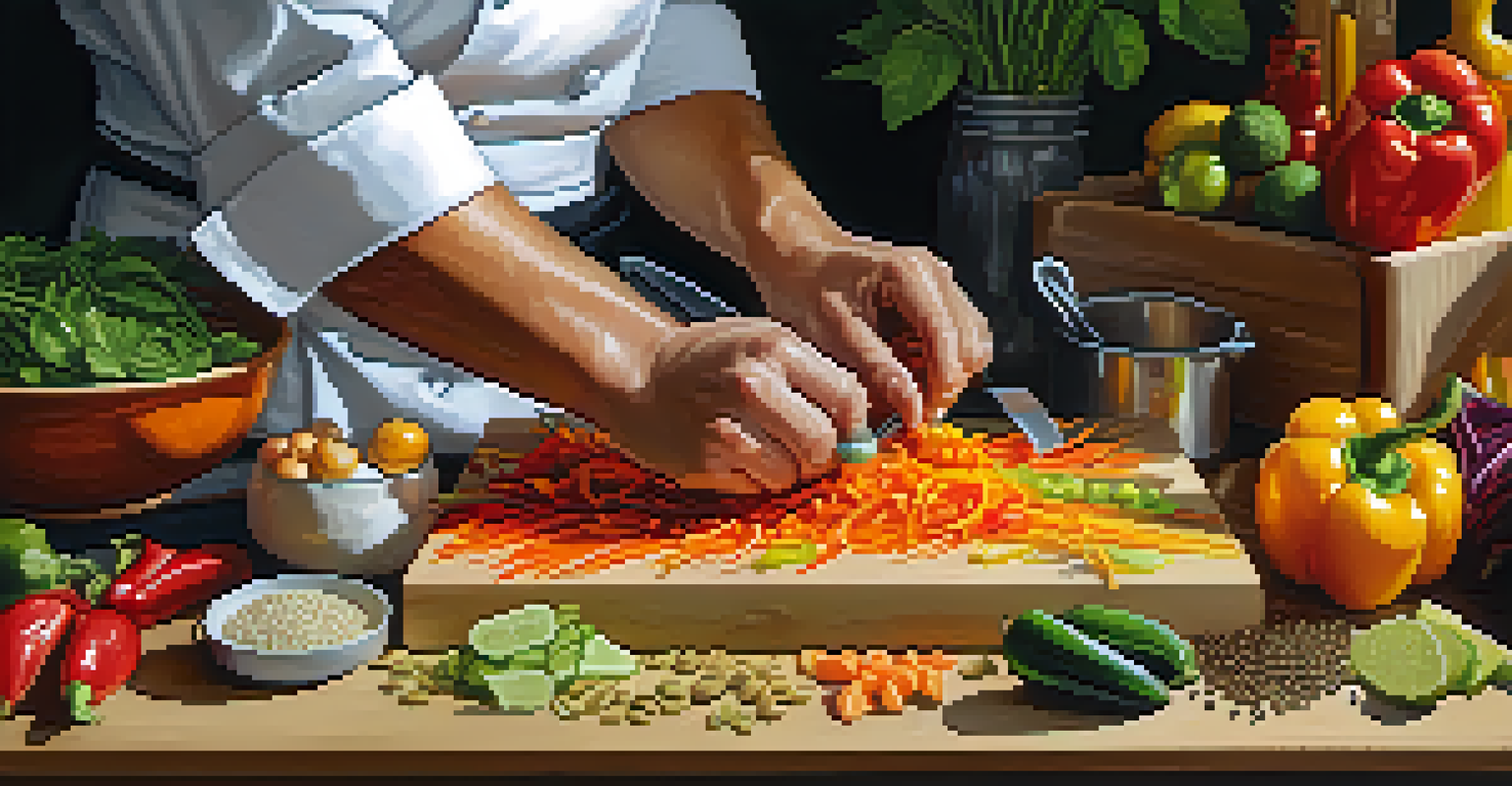How Raw Food Competitions Are Changing Culinary Standards

The Rise of Raw Food Competitions in Culinary Culture
In recent years, raw food competitions have gained popularity, drawing attention from both enthusiasts and professional chefs. These events showcase chefs' creativity and skill in preparing dishes that are not only nutritious but also visually stunning. The movement emphasizes the use of fresh, unprocessed ingredients, promoting a lifestyle that values health and sustainability.
You are what you eat, so don’t be fast, cheap, easy, or fake.
Competitions like the Raw Food World Festival and various local events have created platforms for chefs to display their talents. Participants often push the boundaries of traditional cooking, experimenting with techniques like dehydration, fermentation, and sprouting. This surge in interest reflects a broader shift towards plant-based diets and the appreciation for whole foods.
As these competitions gain traction, they challenge the culinary status quo, encouraging chefs to rethink their approaches. The emphasis on raw ingredients fosters a deeper connection between food preparation and the health benefits associated with unprocessed foods, creating a ripple effect in culinary standards.
Innovative Techniques Shaping Culinary Creativity
Raw food competitions have introduced chefs to a variety of innovative techniques that redefine how food is prepared and presented. For instance, the use of dehydrators allows chefs to create flavors and textures that mimic traditionally cooked dishes, all while retaining nutritional integrity. This creativity not only surprises judges but also inspires other chefs to experiment in their kitchens.

Techniques like spiralizing vegetables into noodles or creating sauces from nuts and seeds showcase the versatility of raw ingredients. As chefs adapt to these methods, they expand their culinary repertoires, turning simple produce into gourmet masterpieces. This innovation fosters a spirit of collaboration among participants, who often share tips and ideas during competitions.
Raw Food Competitions Surge
The rise of raw food competitions highlights chefs' creativity and the growing interest in health-focused, plant-based diets.
Through these events, chefs are encouraged to think outside the box, leading to a continuously evolving culinary landscape. The demand for visually appealing presentations and unique flavor combinations drives chefs to push their limits, ultimately raising the bar for what is possible in the culinary world.
Health Benefits Driving Raw Food Popularity
One of the key factors behind the rise of raw food competitions is the growing awareness of health benefits associated with raw diets. Many participants and audiences are drawn to the idea that cooking can diminish nutritional value and that raw foods can enhance vitality and energy levels. This focus on health has led to a surge in interest in raw culinary arts, attracting a diverse range of followers.
Let food be thy medicine and medicine be thy food.
Competitions often highlight superfoods like kale, chia seeds, and spirulina, educating audiences about their nutritional value. By showcasing these ingredients in delectable dishes, chefs inspire others to incorporate more raw foods into their diets. This educational aspect of competitions not only promotes a healthier lifestyle but also encourages a broader appreciation for plant-based eating.
As more people adopt raw food principles, chefs have a unique opportunity to connect with health-conscious consumers. This alignment of culinary passion with wellness trends creates a powerful movement that has the potential to reshape dietary habits and culinary norms.
Sustainability and Ethical Sourcing in Raw Food
Sustainability is a cornerstone of the raw food movement, with competitions often emphasizing the importance of ethically sourced ingredients. Participants frequently prioritize local, organic produce, highlighting the environmental impact of food choices. This focus not only supports local farmers but also encourages a deeper understanding of food systems and their effects on the planet.
By showcasing dishes made from seasonal ingredients, chefs advocate for responsible consumption and raise awareness about food waste. Competitions serve as a platform for discussing how culinary practices can contribute to environmental sustainability, inspiring others to adopt more conscious habits in their cooking.
Innovative Culinary Techniques
Competitions encourage chefs to explore innovative techniques that redefine food preparation and presentation, fostering collaboration and creativity.
This commitment to sustainability resonates with audiences, fostering a community that values environmentally friendly practices. As chefs compete, they not only aim for culinary excellence but also strive to promote a message of responsibility and mindfulness in food sourcing.
Community Building Through Culinary Competitions
Raw food competitions create a vibrant community of like-minded individuals who share a passion for health, creativity, and sustainability. These events bring together chefs, food enthusiasts, and audiences, fostering connections that extend beyond the competition itself. Participants often form lasting friendships and collaborations that enrich their culinary journeys.
Through networking opportunities, chefs can exchange ideas, learn from one another, and inspire each other to grow. This sense of community encourages a supportive environment where creativity flourishes. As chefs share their experiences, they contribute to a collective knowledge that elevates the entire raw food movement.
Moreover, competitions can act as a catalyst for local communities to engage with the raw food lifestyle. Workshops, tastings, and demonstrations often accompany these events, inviting the public to explore raw culinary arts and foster a sense of belonging within the larger food movement.
Raw Food Competitions and Culinary Education
As raw food competitions gain momentum, they are also influencing culinary education. Many culinary schools are recognizing the importance of raw food techniques and incorporating them into their curricula. This evolution ensures that aspiring chefs are equipped with the skills necessary to thrive in a changing culinary landscape.
Workshops and classes focused on raw food preparation are becoming more common, allowing students to explore the nuances of flavor and texture without traditional cooking methods. By learning about these techniques early on, culinary students can expand their creativity and adapt to diverse culinary trends.
Sustainability in Food Choices
Emphasizing ethical sourcing and sustainability, raw food competitions inspire a community dedicated to responsible culinary practices.
This shift in education not only prepares chefs for the growing demand for raw food options but also encourages a more holistic approach to cooking. As educational institutions embrace this trend, they contribute to the overall elevation of culinary standards in the industry.
The Future of Culinary Arts in a Raw Food Landscape
Looking ahead, raw food competitions are poised to play a significant role in shaping the future of culinary arts. As more chefs and consumers recognize the benefits of raw foods, we can expect to see an increased integration of these principles in mainstream dining. The culinary landscape is likely to evolve, reflecting a greater emphasis on health, sustainability, and innovation.
Chefs who embrace raw food techniques may find themselves at the forefront of a culinary revolution, inspiring others to follow suit. The potential for creativity and experimentation in raw cuisine is boundless, leading to new dishes and flavor profiles that challenge traditional norms.

As this movement continues to grow, it will undoubtedly influence dining trends, restaurant menus, and home cooking practices. The ongoing evolution of raw food competitions will help define the future of culinary excellence, encouraging chefs to push their boundaries and redefine what is possible in the kitchen.